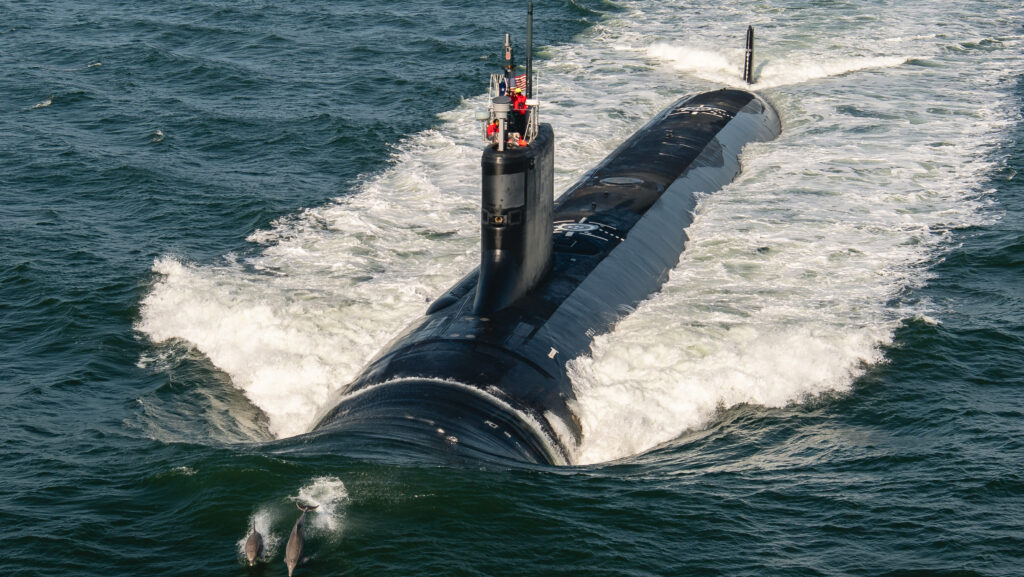
A recent Navy report on ship maintenance looked at how factors like yard capacity affect on-time ship repairs but didn’t consider more operational factors such as how well a ship’s crew can contribute to the maintenance work, according to a recent government watchdog report.
While the Government Accountability Office in a recent report concluded that the Navy analyzed how it oversees ship depot maintenance when seeking to understand its maintenance delays, GAO claims the service did not evaluate other relevant aspects.
“We found that the Navy’s July 2020 report identified two key causes and several contributing factors of maintenance delays for aircraft carriers, surface ships, and submarines. However, the Navy’s report focused only on causes and factors of delays related to the management of depot-level maintenance at the public and private shipyards, rather than also considering causes and factors originating in the acquisition process or as a consequence of operational decisions,” the GAO report reads.
“Specifically, for public shipyards, the July 2020 report identified the key cause of maintenance delays as insufficient public shipyard capacity relative to growing maintenance requirements,” it continues. “The July 2020 report also identified various contributing factors related to this key cause, including understated workload requirements, a diminishing vendor base for replacement parts, and overly optimistic maintenance assumptions, among others.”
In accordance with the Fiscal Year 2020 defense policy bill, GAO evaluated a Navy report that was published in July that sought to assess the causes of ship maintenance delays.
While the Navy report concluded that growth work after issuing contracts caused delays in the private yards, GAO noted that other choices the Navy makes related to these availabilities weren’t assessed in the service’s report.
“The July 2020 report also identified contributing factors, including challenges in starting maintenance periods on time, imprecise estimates of the duration of maintenance periods, insufficient visibility by the Navy into the capacity of private shipyards, and the limitations associated with the single-year duration of the Navy’s operations and maintenance appropriations,” GAO writes of the Navy’s assessment of delays at the private yards.
“We found that these key causes and contributing factors generally align with depot-level factors that contribute to maintenance delays we had previously identified,” it continues. “However, the July 2020 report did not describe key causes or contributing factors that arise from decisions made in acquisition and operations, such as optimistic sustainment assumptions, insufficient technical data, ships’ crew levels and performance (see sidebar), and deferred maintenance during operational deployments.”
Navy acquisition executive James Geurts, in a letter to GAO responding to the watchdog’s report, argued that the Navy had previously addressed the effects of acquisition and operational choices in a prior report.
“The July 2020 report states it does not repeat acquisitions/operations, as they were covered in the March 2019 report,” Geurts wrote to GAO. “Statement is accurate to say the July 2020 report does not discuss acquisitions and operations, however, it is not accurate to imply the Navy has never considered them.”
Geurts suggested GAO include a note about the prior Navy report or remove the language stating the service did not consider operational and acquisition choices.
In addition to not factoring in acquisition and operational components, GAO found that the Navy’s maintenance report did not feature “all elements of results-oriented management” in accordance with the legislative mandate from Congress.
“The Navy’s July 2020 report described the Navy’s actions to address the causes of depot-level maintenance delays it had identified, but it did not incorporate all elements of results-oriented management that were required by the conference report, including analytically based goals; results-oriented metrics to measure progress; and required resources, risks, and stakeholders to achieve those goals,” GAO writes.
“Specifically, we found that the July 2020 report identified stakeholders needed to implement and oversee its plan of action,” it continues. “However, we found that the Navy did not include an achievable goal in the report, is still developing metrics to measure progress, and did not fully describe the resources needed and risks involved.”
GAO noted that, while the Navy in its report said it’s aiming to cut the number of maintenance delay days by 80 percent between FY 2019 and FY 2020 and altogether eradicate maintenance delay days by FY 2021, the service has not achieved the 80-percent benchmark.
“NAVSEA officials said they still hope to meet the 80 percent reduction in days of maintenance delay by the end of fiscal year 2020 for both private surface ship maintenance and maintenance at public shipyards. However, our analysis of Navy data showed that the Navy had already incurred significantly more days of maintenance delay than would allow it to meet this goal.” GAO writes.
“Specifically, the Navy incurred 3,096 days of maintenance delay through June of fiscal year 2020 on surface ships—more than twice the 1,419 days or fewer that would have allowed it to achieve an 80 percent reduction,” it continues. “Likewise, the Navy incurred 730 days of maintenance delay through June of fiscal year 2020 on aircraft carriers and submarines at public shipyards, more than the 430 days or fewer that would have allowed it to achieve an 80 percent reduction.”
Geurts took issue with how GAO assessed the Navy’s objectives and said the 80-percent benchmark for cutting maintenance delay days was a “stretch goal,” but GAO said that, “none of the Navy’s comments demonstrated that our characterization was inaccurate.”
Naval Sea Systems Command told GAO that the service is not on track to eradicate maintenance delay days in FY 2021 as planned.
“According to these officials, it is already apparent that there will be delays in fiscal year 2021 because delays in fiscal year 2020 pushed back the start dates for some fiscal year 2021 maintenance periods,” the report reads. “These officials said that the effects of the Coronavirus Disease 2019 (COVID-19) on shipyard workforce capacity have been a major cause for the delays, in addition to the other factors contributing to delays identified in the July 2020 report.”
Geurts also pointed out that the Navy and GAO use different approaches to determine the number of maintenance delay days and that the service has altered its baseline maintenance timelines recently. Still, GAO argued its approach is “more appropriate” for quantifying the number of delay days.
“The Navy stated that it was able to reduce such delays by nearly 80 percent in fiscal year 2020 from the prior year. However, the Navy also acknowledged that its method included adjusting the baselines—the expected durations of the maintenance periods—for fiscal year 2020 maintenance periods,” GAO wrote. “The Navy stated that it made these adjustments to align work with available shipyard capacity and improvements in planning and directed maintenance. Our calculations did not include such adjustments to baselines, and instead measured the days that a maintenance period extended past its original planned end date. We believe this is a more appropriate method for measuring days of delay during any given maintenance period, rather than adjusting the baseline.”





